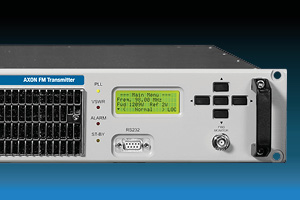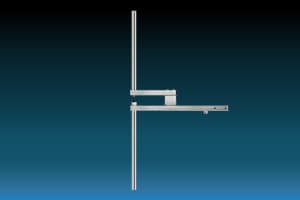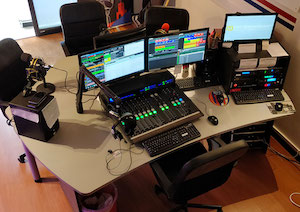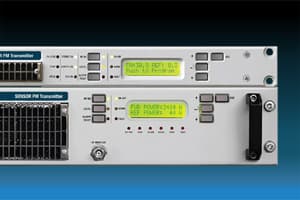
Inovonics' DAVID IV is the fourth generation processor in our DAVID (vs. Goliath) series of FM and HD Radio™ air chain processors. Our 100% DSP-based, aerodynamic audio engine gives you a complete advantage over the most important "signature" sound parameters, while intelligent controls allow you to improve program material quickly and effectively.
Processing includes 5 bands of dynamic compression with EQ, Automatic Gain Control (AGC) intelligent gain adjustment, bass range and stereo improvements, and our Polarity Independent Peak Processing (PIP) limiter.
Il DAVID IV
combina un suono straordinariamente pulito con un generatore stereo FM premium che include anche la misurazione interna con la combinazione per la sottoportante RDS (RadioData System).
Il DAVID IV è dotato di 25 preset con i formati musicali più diffusi e le impostazioni dell'utente possono essere facilmente salvate e condivise sulle reti delle stazioni. La connettività TCP/IP è virtualmente automatica e consente il controllo e l'accesso completo a distanza da qualsiasi parte del mondo.
Caratteristiche
Design completamente digitale basato su DSP a bassissima latenza.
5 bande di compressione della gamma dinamica regolabile e 'grafico-EQ'.
"AGC a guadagno "finestrato" con gating "intelligente
Miglioramenti dei bassi con regolazioni indipendenti di 'Rumble' e 'Punch'.
Elaborazione in campo stereo per regolare il palcoscenico d'ascolto
La funzione passa-alto programmabile elimina le frequenze dei subbassi che derubano la modulazione
Il limitatore PIPP (Polarity Independent Peak Processing), di proprietà di Inovonics, garantisce la massima densità del vettore.
Ingresso e uscite digitali AES3 (XLR), che accettano frequenze di campionamento di 32kHz, 44,1kHz, 48kHz, 96kHz.
Ingressi e uscite analogiche sinistra/destra (XLR) e più uscite MPX composite indipendenti multiple.
Costruito in Oscillatore di tono
Limitazione adattiva delle alte frequenze ad alta frequenza "Adaptive pre-emphasis" per FM
Facile configurazione e controllo tramite il pannello frontale e controllo dell'accesso remoto via TCIP/IP
Costruito in Stereocoder (Stereo-Gen) con misurazione RDS interna e combinazione di
Menu hardware/software in lingua inglese, spagnola e portoghese
Sono incluse 25 preimpostazioni di fabbrica ottimizzate per i formati radio più diffusi e 20 preimpostazioni utente personalizzabili che possono essere scaricate o condivise come piccoli file
SPECIFICHE DI PRESTAZIONE
Risposta in frequenza
Uscita Composite/MPX: ±0.25dB, 20Hz-15kHz assumendo l'uso di un decoder FM-multiplex di qualità da laboratorio con la caratteristica di de-enfasi appropriata
Uscite di linea L/R: ±0.25dB, 20Hz-15kHz attraverso una rete de-enfasi appropriata nel modo FM; ±0.25dB, 20Hz-20kHz nel modo Flat
Uscita digitale AES (ingresso digitale): ±0.25dB, 20Hz -15kHz attraverso una rete de-enfasi appropriata nel modo FM; ±0.1dB, 20Hz-20kHz nel modo Flat
Rumore (non pesato)
Uscita Composite/MPX: SNR >85dB con modulazione della portante al massimo livello di uscita attraverso un'adeguata rete di de-enfasi
L/R Uscite di linea analogiche: Rumore residuo migliore di 100dB sotto il punto di clipping dell'uscita (attraverso un'appropriata rete di de-enfasi nel modo FM)
Uscita digitale AES (ingresso digitale): Rumore residuo migliore di 130dB sotto 0dBFS (attraverso un'appropriata rete di de-enfasi quando indicato
Distorsione
Uscita Composite/MPX: <0.01% THD utilizzando un'appropriata rete di de-enfasi
Uscite di linea: <0,06% THD nelle uscite di linea digitali e analogiche utilizzando un'appropriata rete di de-enfasi quando indicato
Separazione stereo
Composite/MPX output: >65dB, 20Hz-15kHz assuming the use of a laboratory quality FM-multiplex decoder with the appropriate de-emphasis feature. Linear crosstalk (main/sub or sub/main):.78dB
L/R Analog Line Outputs: 1dB below output clipping level, >100dB through appropriate de-emphasis network in FM mode; not weighed in Flat mode
AES Digital Output:A 0dBFS, >130dB through an appropriate de-emphasis network in FM mode; not weighed in Flat mode (using digital line input)
Program Signal Latency
≤ 4.2 milliseconds, any input to any output in any operating mode
19kHz stereo pilot protection
65dB with reference to 9% pilot injection
Suppression 38kHz
80dB with reference to 100% vector modulation.
7kHz RDS subcarrier protection
65dB with reference to RDS sub-carrier injection at 5%.
BACK PANEL APPOINTMENTS
Digital line input
The AES3 stereo input (XLR) accepts program sources at sample rates of 32kHz, 44.1kHz, 48kHz, and 96kHz; 16/24-bit. Input gain is adjustable for average program levels between -5dB and -35dB, re: -20dBFS.
Analog line inputs
L/R active balanced/bridging (XLR) inputs accept program average line levels between -15dBu and +15dBu; +26dBu maximum peak level.
Line Outputs
The digital and analog line outputs can each be configured independently for flat response at 20kHz, or for 'FM' characteristics at 15kHz, both with pre-emphasis and normalized flat response.
Digital line output
The AES3 stereo output (XLR) can be adjusted between -20dBFS and 0dBFS, corresponding to 100% carrier modulation (peak). The output sample rate can be set to follow the digital or forced line input at 32kHz, 44.1 kHz, 48kHz or 96kHz. Sampling resolution is 24 bit.
Analog Line Outputs
Active balanced outputs (XLR) are adjustable between -10dBu and +24dBu (+21.5dBm), corresponding to 100% carrier modulation; source impedance is 200 ohms.
Composite/MPX output
Two unbalanced outputs (BNC) are independently adjustable between 0.8V p-p and 8V p-p (+11dBu), corresponding to 100% carrier modulation; the source impedance is 75 ohms. The pre-emphasis can be set to 75μs, 50μs or OFF.
RDS input
The BNC (Unbalanced/bridging) input accepts a 57kHz RDS sub-carrier at any level between 0.5V p-p and 5.0V p-p for a typical injection level of 5% of total carrier modulation.
19kHz RDS Sync
When RDS is enabled, the synchronization output (BNC) provides a TTL-compatible 5V p-p square wave at 19kHz pilot frequency; 75-ohm source
Network port
An RJ45 jack accepts TCP/IP network connections for the configuration and remote operation of DAVID IV.
Headphone jack (front panel)
A quarter-inch headphone jack (TRS) allows the user to monitor the processed program audio. A volume control next to the jack adjusts the listening level.
AUDIO PROCESSING FEATURES
High Pass Program
A user-programmable high-pass filter attenuates subacoustic noise that could compromise modulation efficiency. The filter is adjustable between 20Hz and 65Hz.
AGC
The non-invasive ACG with a capture/correction radius of ±18dB. The positive AGC gain can be truncated to any value between +18dB and 0dB; the AGC correction rate is programmable.
Stereo enhancement
This double-action utility effectively expands the sound stage for the stereo program and the centerchannel component ʻsoloʼ independently.
5-Band ʻMultipressorʼ
The program audio is divided into five frequency bands. Each band provides both dynamic compression and adjustable static gain to allow fixed equalization and other control ʻsignatureʼ of the program's audio.
Bass boost
The sub-bass program frequencies are subjected to independent dynamic compression, expansion, selective clipping and filtering for both static ʻRumbleʼ and dynamic ʻPunchʼ control of low-end components.
PIPP Peak Limiter
Inovonicsʼ exclusive polar peak processing ensures optimal modulation of the FM carrier or another delivery channel.
ITU multiplex power control
The Peak Limiter section can be optionally configured to control the r.m.s. power of the composite multiplex signal to meet the European ITU-R standard.
Adaptive Pre-Emphasis
Fast HF limiting and clipping with distortion elimination are best used to provide independent control of the amplitude of the program frequencies subject to the FM preemphasis curve. This helps preserve program brightness and clarity despite the native power bandwidth constraints of FM broadcasting.
Composite clipping
At the user's discretion, up to 3dB of clipping can be applied to the composite/basic band signal. Clipping is performed prior to injecting the stereo driver and RDS subcarrier.
HD Radio Delay
The composite/MPX output of DAVID IV can be delayed between 1ms and 9.999 seconds in 1ms increments, compared to the analog and digital program line outputs when set to 20kHz (Flat) output mode. When set in FM mode(s), the line outputs are also subject to the programmed delay.
Controlling the software
The IP network port and the supplied software allow the remote configuration and operation of DAVID IV over a local network or the Internet using any Windows® PC (XP or later).
THE USER INTERFACE
Front panel
A graphic display on the front panel and a scroll wheel allow simple, menu-driven in-situ setting and operation of DAVID IV. LED bar displays indicate input/output levels and audio processing action.
Software Control
The IP network port and the supplied software allow the remote configuration and operation of DAVID IV over a local network or the Internet using a Windows® PC (XP or later).
Preset processing
25 factory presets are available and optimized for the world's most popular formats, and another 20 custom user settings can be easily saved and shared between station networks.
MISCELLANEOUS
AC network requirements
Dimensions and weight
105-130VAC or 210-255VAC, 50/60Hz; 8 watts
Recommended products
no products avaible
 BACK TO ON-AIR STUDIO
BACK TO ON-AIR STUDIO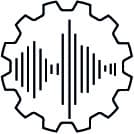 AUDIO INTERFACES
AUDIO INTERFACES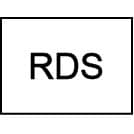 RDS ENCODER
RDS ENCODER STUDIO ACCESSORIES
STUDIO ACCESSORIES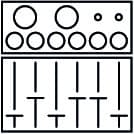 AUDIO MIXER
AUDIO MIXER